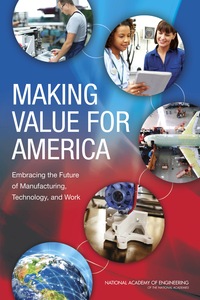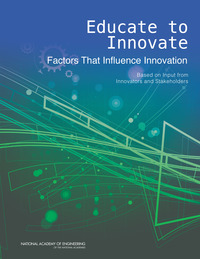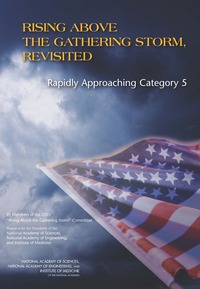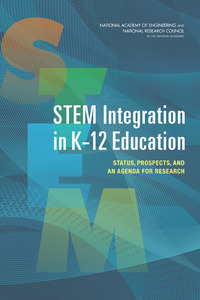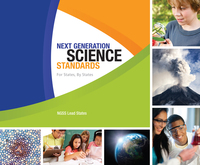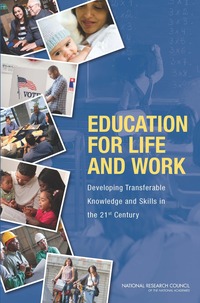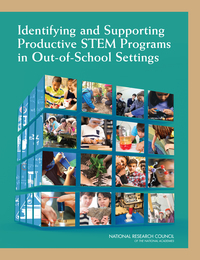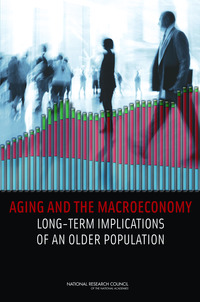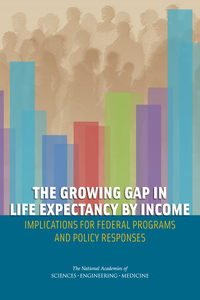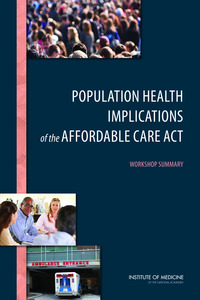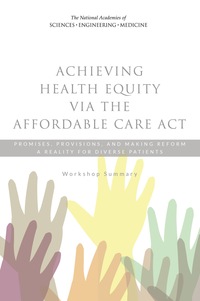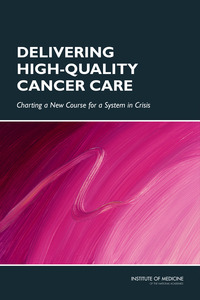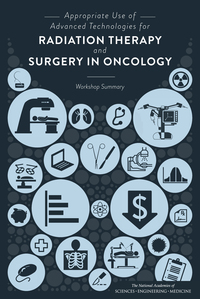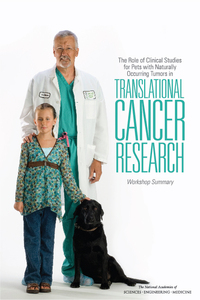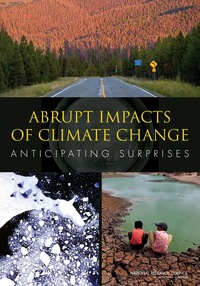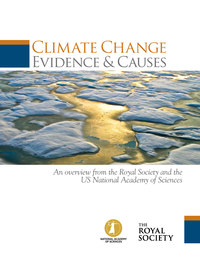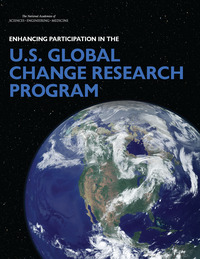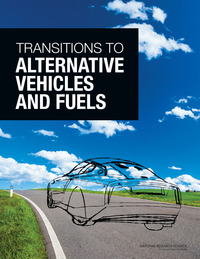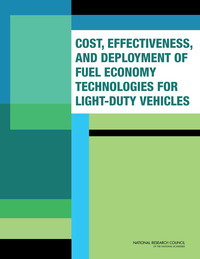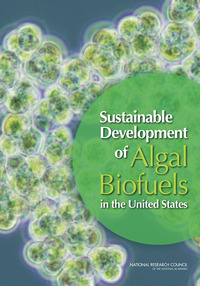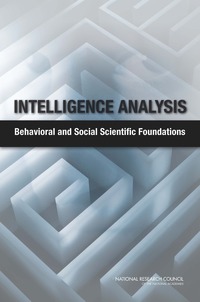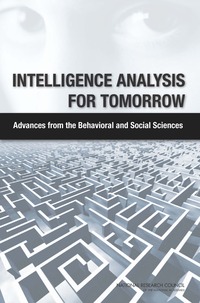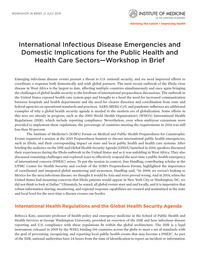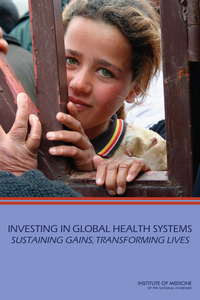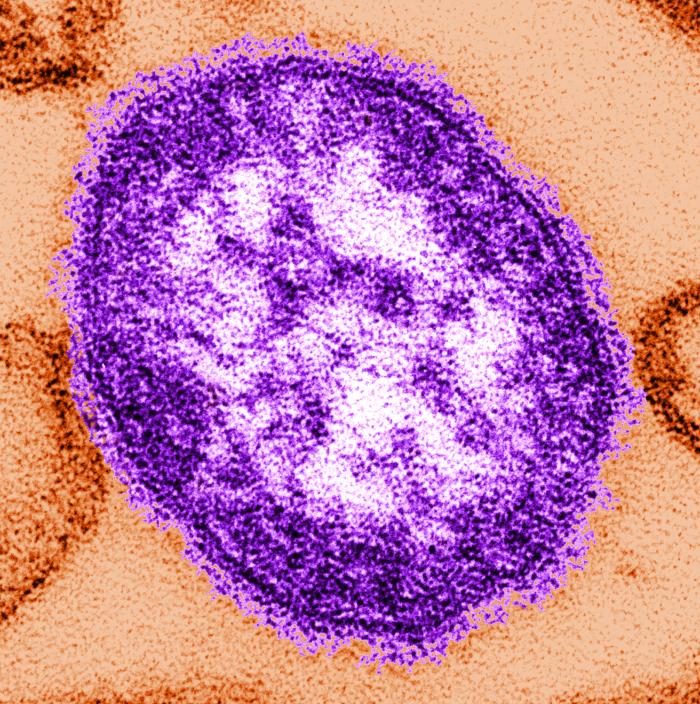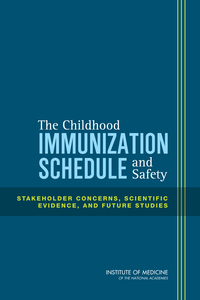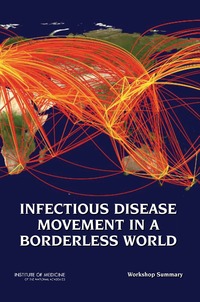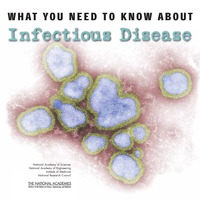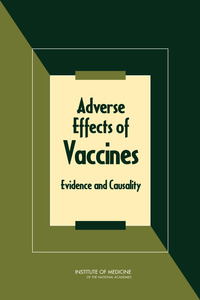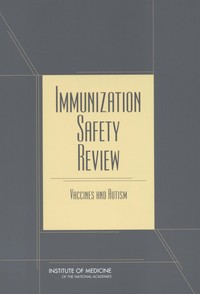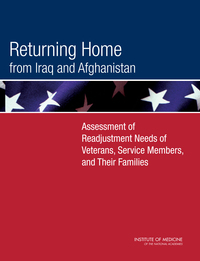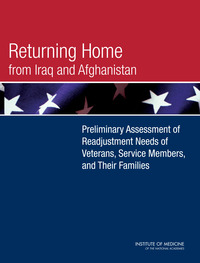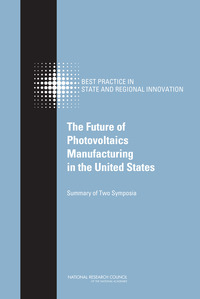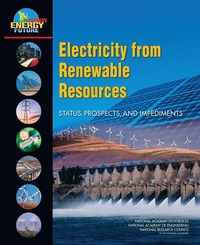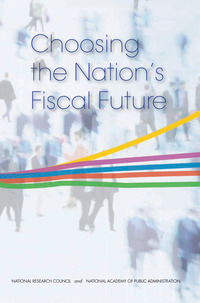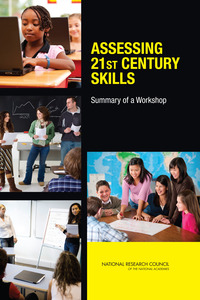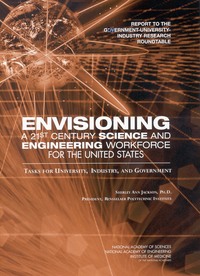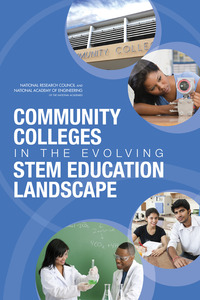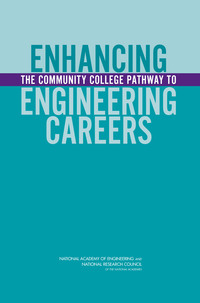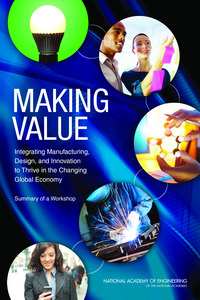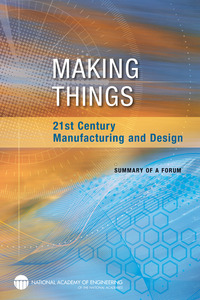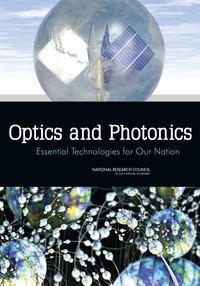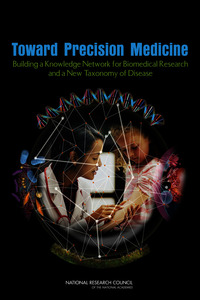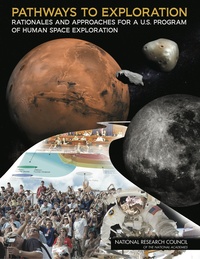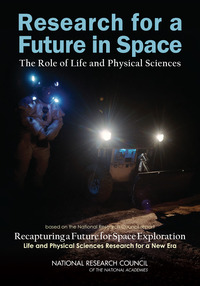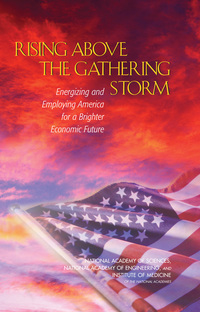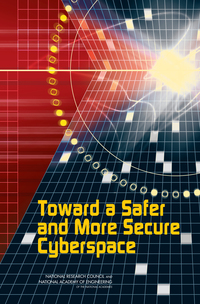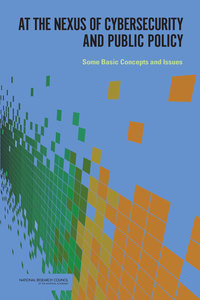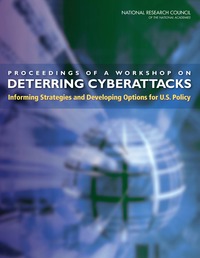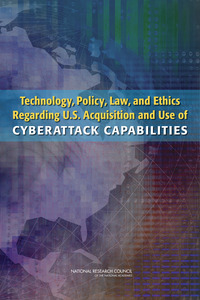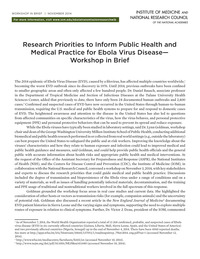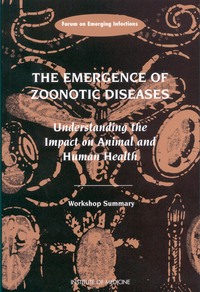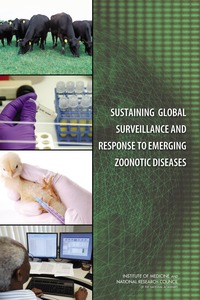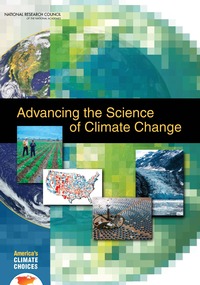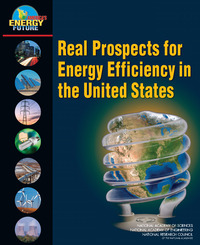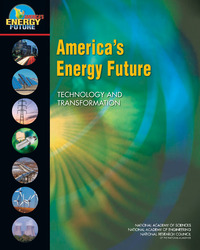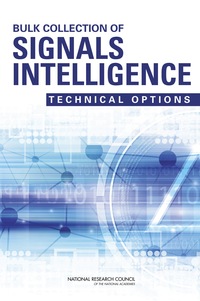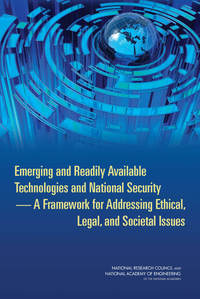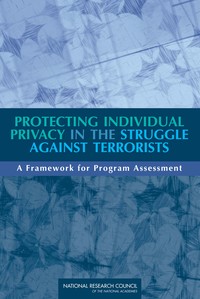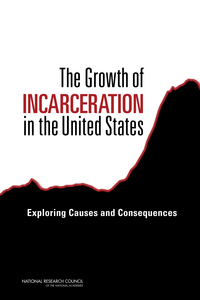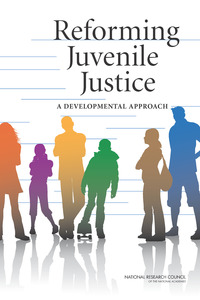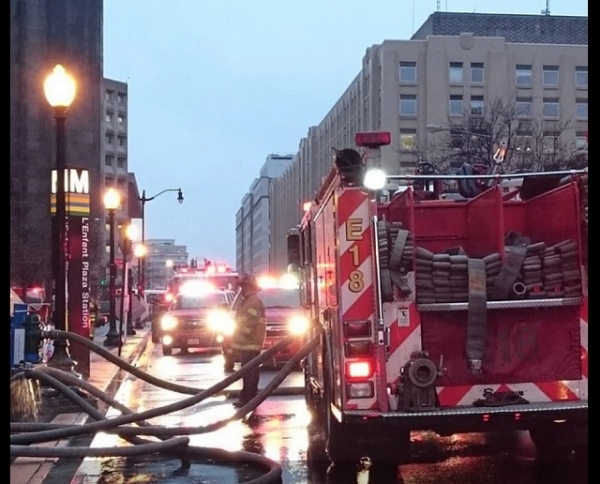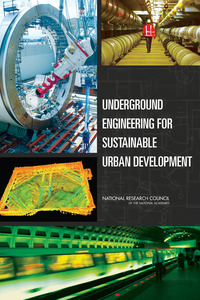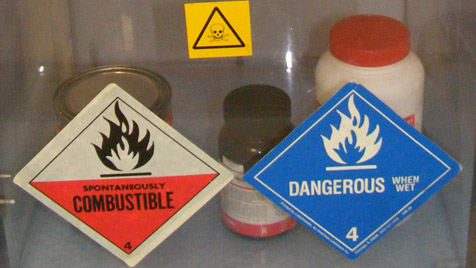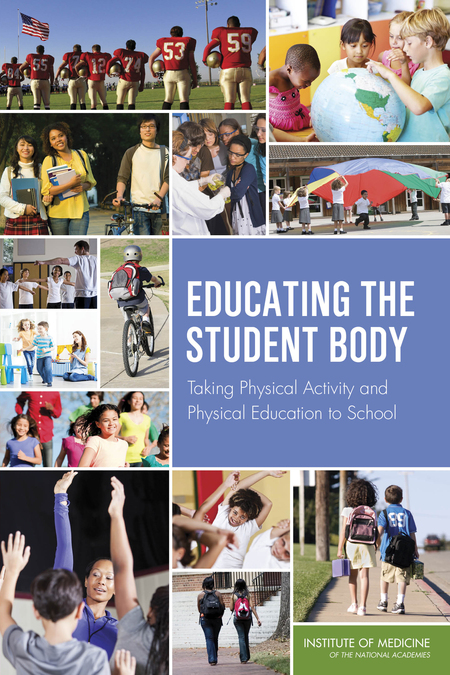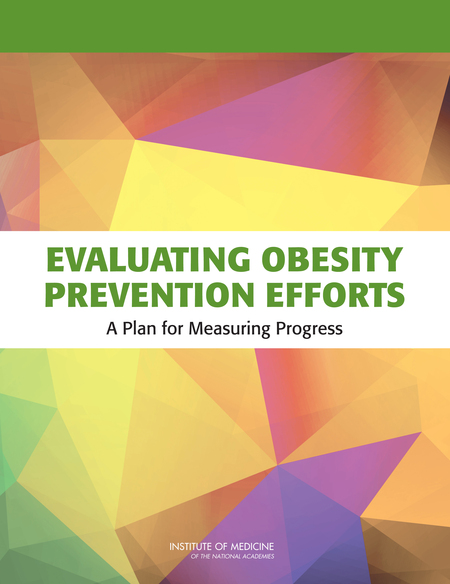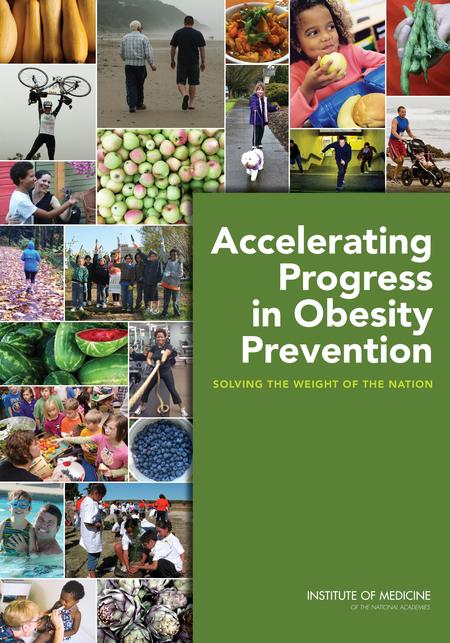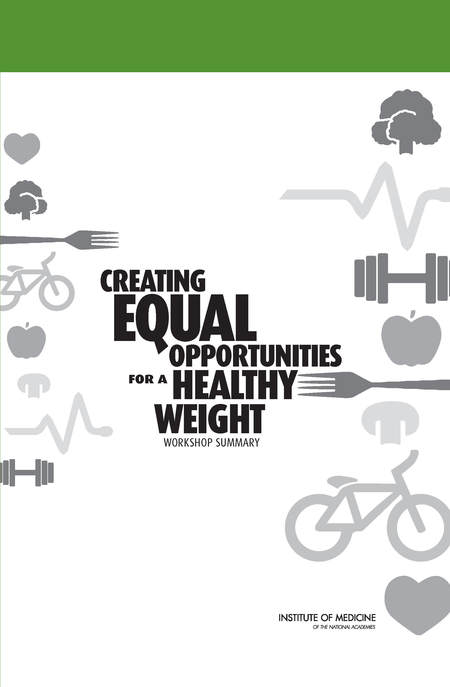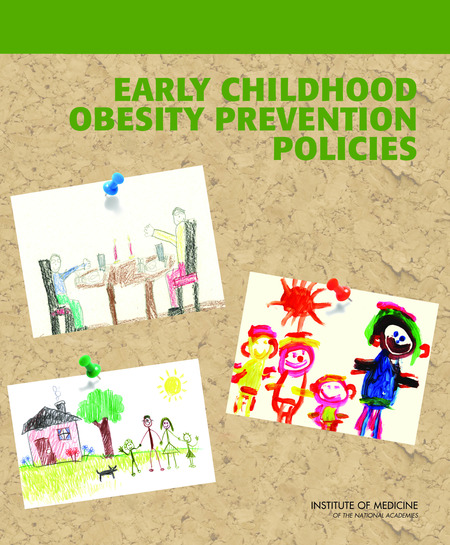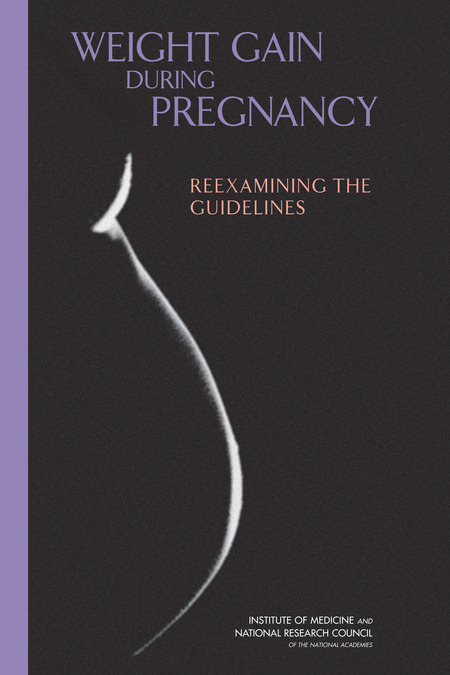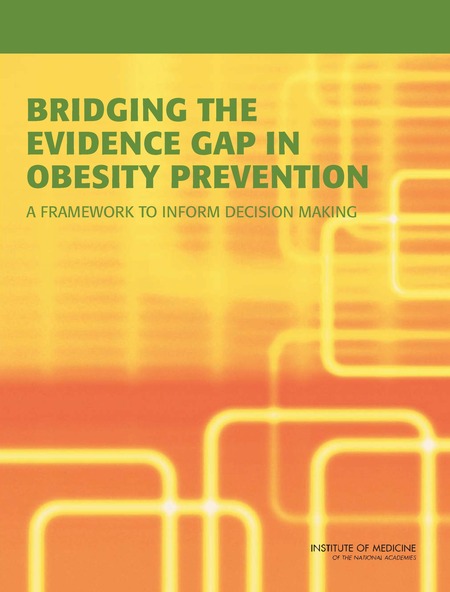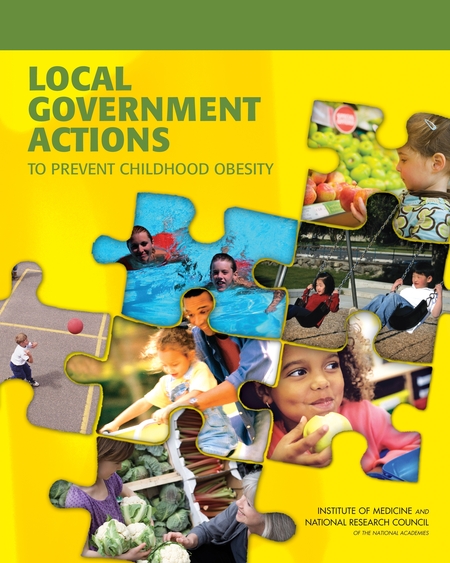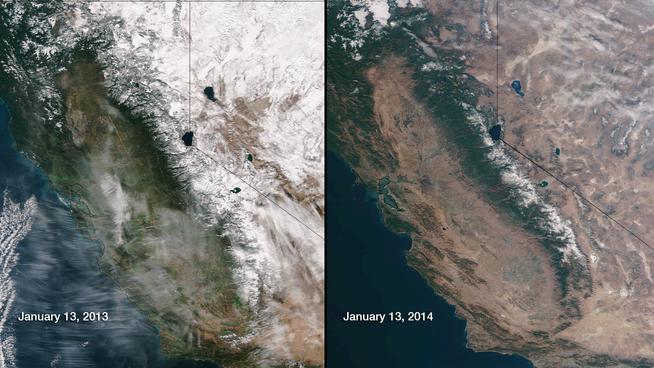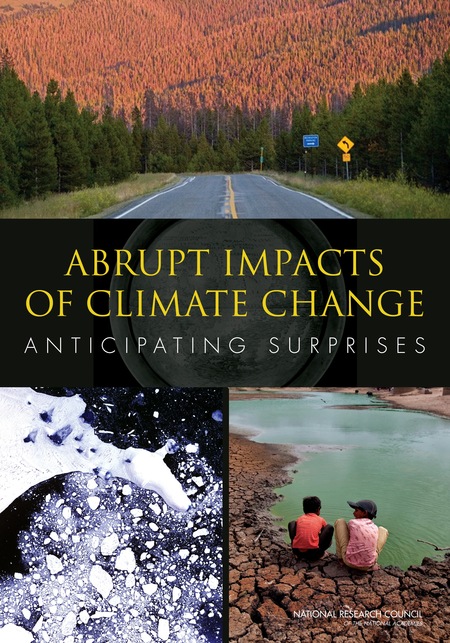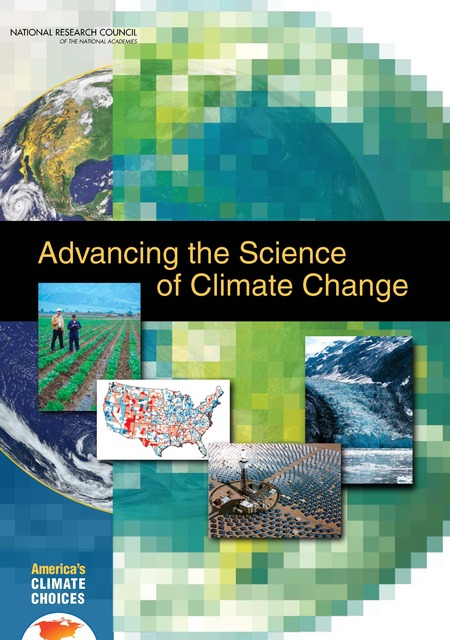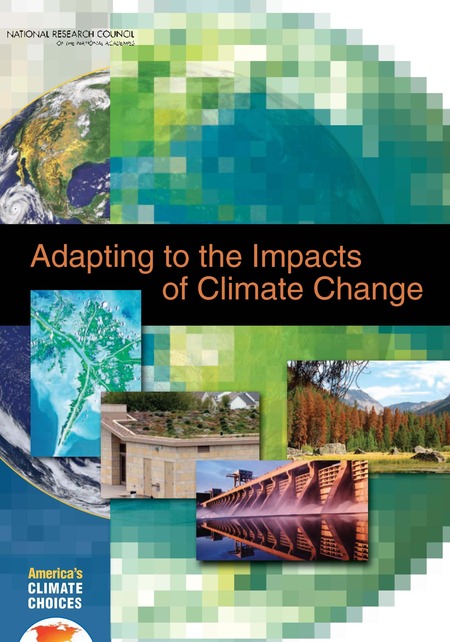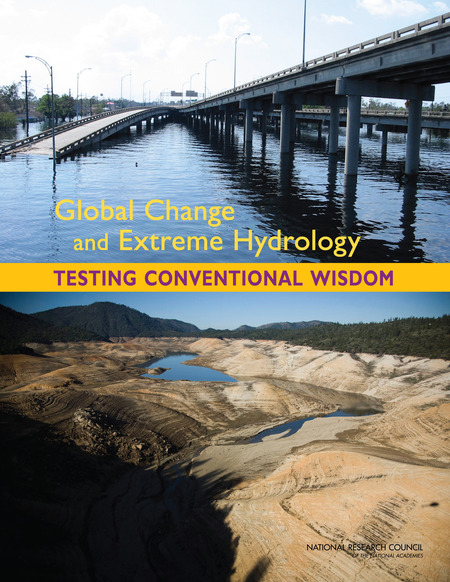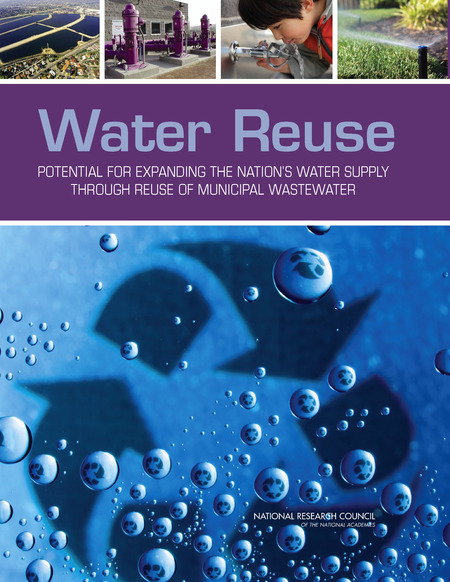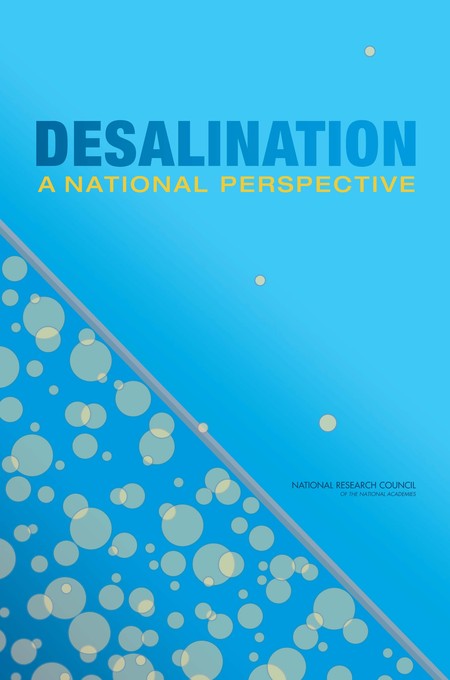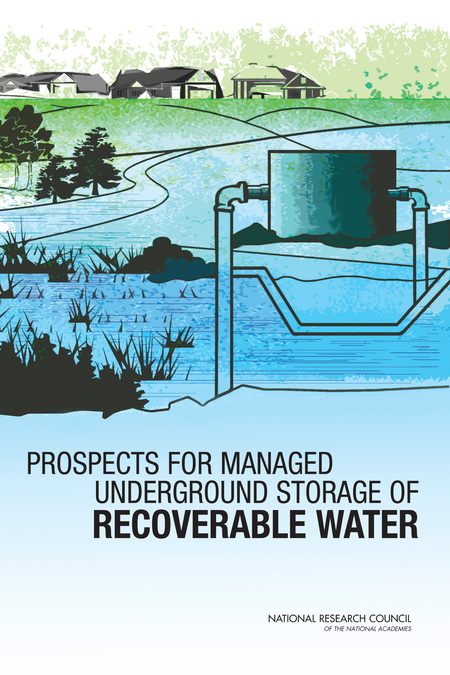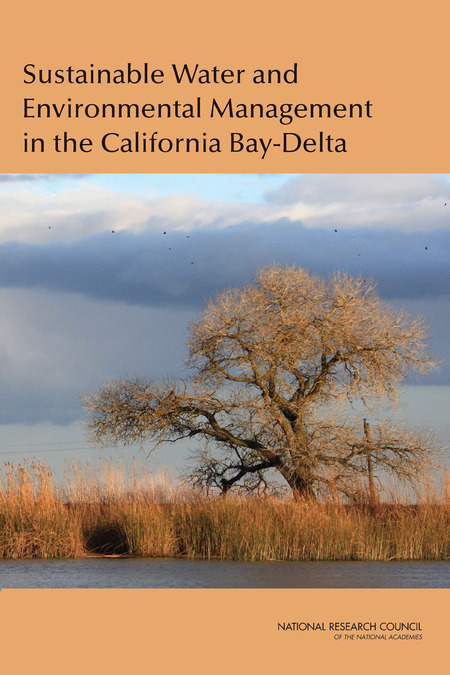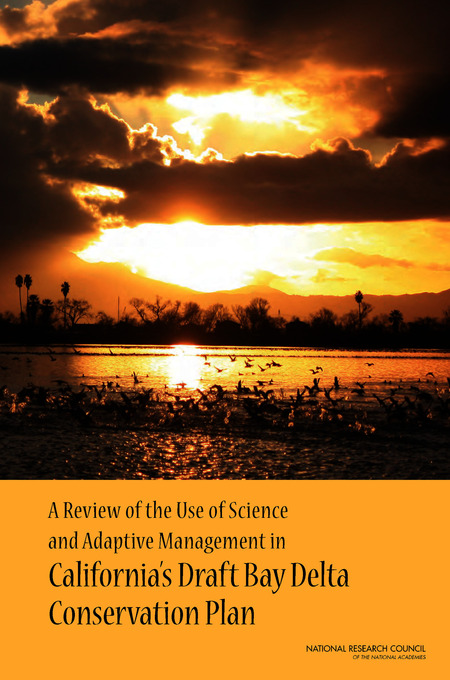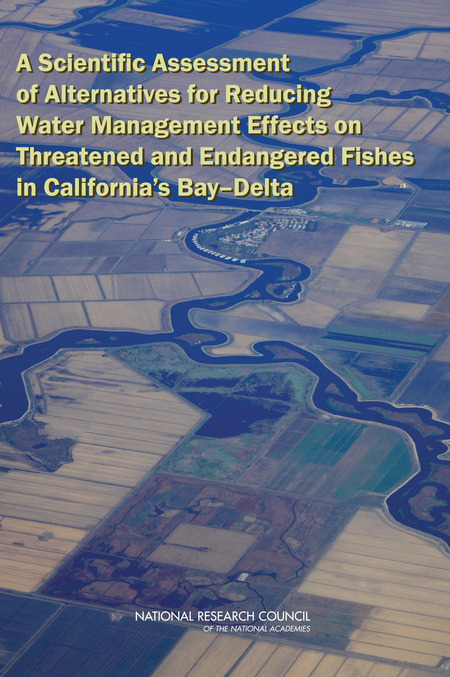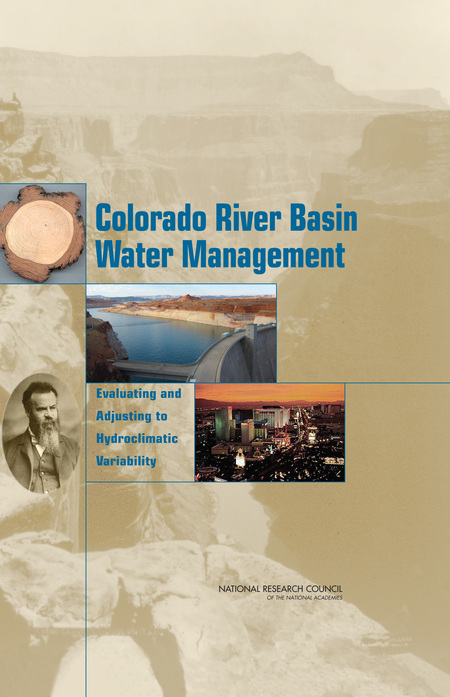The President’s Joint Address to Congress focused on topics including immigration, health care, and infrastructure. The National Academies Press provides resources directly related to these issues.
In keeping with our seven-year tradition of providing resources on the topics in Presidents’ State of the Union addresses, we’ve annotated the complete text of President Trump’s Address to Congress with relevant reports from the National Academies that provide authoritative, independent guidance on these issues.
PRESIDENT DONALD J. TRUMP’S ADDRESS TO A JOINT SESSION OF CONGRESS
Remarks as prepared for delivery
TO THE CONGRESS OF THE UNITED STATES:
Mr. Speaker, Mr. Vice President, Members of Congress, the First Lady of the United States, and Citizens of America:
Tonight, as we mark the conclusion of our celebration of Black History Month, we are reminded of our Nation’s path toward civil rights and the work that still remains. Recent threats targeting Jewish Community Centers and vandalism of Jewish cemeteries, as well as last week’s shooting in Kansas City, remind us that while we may be a Nation divided on policies, we are a country that stands united in condemning hate and evil in all its forms.
Each American generation passes the torch of truth, liberty and justice — in an unbroken chain all the way down to the present.
That torch is now in our hands. And we will use it to light up the world. I am here tonight to deliver a message of unity and strength, and it is a message deeply delivered from my heart.
A new chapter of American Greatness is now beginning.
A new national pride is sweeping across our Nation.
And a new surge of optimism is placing impossible dreams firmly within our grasp.
What we are witnessing today is the Renewal of the American Spirit.
Our allies will find that America is once again ready to lead.
Diplomacy for the 21st Century recommends steps that the Department of State should embrace to take full advantage of the leading science and technology (S&T) capabilities of the United States. These capabilities provide the department with many opportunities to promote a variety of the interests of the United States and its allies in a rapidly changing world wherein S&T are important drivers of economic development at home and abroad and help ensure international security. This …
All the nations of the world — friend or foe — will find that America is strong, America is proud, and America is free.
In 9 years, the United States will celebrate the 250th anniversary of our founding — 250 years since the day we declared our Independence.
It will be one of the great milestones in the history of the world.
But what will America look like as we reach our 250th year? What kind of country will we leave for our children?
I will not allow the mistakes of recent decades past to define the course of our future.
For too long, we’ve watched our middle class shrink as we’ve exported our jobs and wealth to foreign countries.
Globalization, developments in technology, and new business models are transforming the way products and services are conceived, designed, made, and distributed in the U.S. and around the world. These forces present challenges – lower wages and fewer jobs for a growing fraction of middle-class workers – as well as opportunities for “makers” and aspiring entrepreneurs to create entirely new types of businesses and jobs. Making Value for America examines these challenges and …
Americans have long recognized that investments in public education contribute to the common good, enhancing national prosperity and supporting stable families, neighborhoods, and communities. Education is even more critical today, in the face of economic, environmental, and social challenges. Today’s children can meet future challenges if their schooling and informal learning activities prepare them for adult roles as citizens, employees, managers, parents, volunteers, and entrepreneurs. To …
We’ve financed and built one global project after another, but ignored the fates of our children in the inner cities of Chicago, Baltimore, Detroit — and so many other places throughout our land.
We’ve defended the borders of other nations, while leaving our own borders wide open, for anyone to cross — and for drugs to pour in at a now unprecedented rate.
And we’ve spent trillions of dollars overseas, while our infrastructure at home has so badly crumbled.
Then, in 2016, the earth shifted beneath our feet. The rebellion started as a quiet protest, spoken by families of all colors and creeds — families who just wanted a fair shot for their children, and a fair hearing for their concerns.
But then the quiet voices became a loud chorus — as thousands of citizens now spoke out together, from cities small and large, all across our country.
Finally, the chorus became an earthquake — and the people turned out by the tens of millions, and they were all united by one very simple, but crucial demand, that America must put its own citizens first … because only then, can we truly MAKE AMERICA GREAT AGAIN.
Dying industries will come roaring back to life. Heroic veterans will get the care they so desperately need.
Our military will be given the resources its brave warriors so richly deserve.
Crumbling infrastructure will be replaced with new roads, bridges, tunnels, airports and railways gleaming across our beautiful land.
Our terrible drug epidemic will slow down and ultimately, stop.
Despite efforts to reduce drug consumption in the United States over the past 35 years, drugs are just as cheap and available as they have ever been. Cocaine, heroin, and methamphetamines continue to cause great harm in the country, particularly in minority communities in the major cities. Marijuana use remains a part of adolescent development for about half of the country’s young people, although there is controversy about the extent of its harm.
Given the persistence of drug …
New and improved therapies to treat and protect against drug dependence and abuse are urgently needed. In the United States alone about 50 million people regularly smoke tobacco and another 5 million are addicted to other drugs. In a given year, millions of these individuals attempt—with or without medical assistance—to quit using drugs, though relapse remains the norm. Furthermore, each year several million teenagers start smoking and nearly as many take illicit drugs for the …
How should the war on drugs be fought? Everyone seems to agree that the United States ought to use a combination of several different approaches to combat the destructive effects of illegal drug use. Yet there is a remarkable paucity of data and research information that policy makers require if they are to create a useful, realistic policy package-details about drug use, drug market economics, and perhaps most importantly the impact of drug enforcement activities.
Informing …
And our neglected inner cities will see a rebirth of hope, safety, and opportunity.
Above all else, we will keep our promises to the American people.
It’s been a little over a month since my inauguration, and I want to take this moment to update the Nation on the progress I’ve made in keeping those promises.
Since my election, Ford, Fiat-Chrysler, General Motors, Sprint, Softbank, Lockheed, Intel, Walmart, and many others, have announced that they will invest billions of dollars in the United States and will create tens of thousands of new American jobs.
The stock market has gained almost three trillion dollars in value since the election on November 8th, a record. We’ve saved taxpayers hundreds of millions of dollars by bringing down the price of the fantastic new F-35 jet fighter, and will be saving billions more dollars on contracts all across our Government. We have placed a hiring freeze on non-military and non-essential Federal workers.
We have begun to drain the swamp of government corruption by imposing a 5 year ban on lobbying by executive branch officials — and a lifetime ban on becoming lobbyists for a foreign government.
We have undertaken a historic effort to massively reduce job‑crushing regulations, creating a deregulation task force inside of every Government agency; imposing a new rule which mandates that for every 1 new regulation, 2 old regulations must be eliminated; and stopping a regulation that threatens the future and livelihoods of our great coal miners.
We have cleared the way for the construction of the Keystone and Dakota Access Pipelines — thereby creating tens of thousands of jobs — and I’ve issued a new directive that new American pipelines be made with American steel.
We have withdrawn the United States from the job-killing Trans-Pacific Partnership.
With the help of Prime Minister Justin Trudeau, we have formed a Council with our neighbors in Canada to help ensure that women entrepreneurs have access to the networks, markets and capital they need to start a business and live out their financial dreams.
To protect our citizens, I have directed the Department of Justice to form a Task Force on Reducing Violent Crime.
After decades of stability from the 1920s to the early 1970s, the rate of imprisonment in the United States more than quadrupled during the last four decades. The U.S. penal population of 2.2 million adults is by far the largest in the world. Just under one-quarter of the world’s prisoners are held in American prisons. The U.S. rate of incarceration, with nearly 1 out of every 100 adults in prison or jail, is 5 to 10 times higher than the rates in Western Europe and other democracies. The …
Adolescence is a distinct, yet transient, period of development between childhood and adulthood characterized by increased experimentation and risk-taking, a tendency to discount long-term consequences, and heightened sensitivity to peers and other social influences. A key function of adolescence is developing an integrated sense of self, including individualization, separation from parents, and personal identity. Experimentation and novelty-seeking behavior, such as alcohol and drug use, …
I have further ordered the Departments of Homeland Security and Justice, along with the Department of State and the Director of National Intelligence, to coordinate an aggressive strategy to dismantle the criminal cartels that have spread across our Nation.
We will stop the drugs from pouring into our country and poisoning our youth — and we will expand treatment for those who have become so badly addicted.
At the same time, my Administration has answered the pleas of the American people for immigration enforcement and border security. By finally enforcing our immigration laws, we will raise wages, help the unemployed, save billions of dollars, and make our communities safer for everyone. We want all Americans to succeed — but that can’t happen in an environment of lawless chaos. We must restore integrity and the rule of law to our borders.
The U.S. Department of Homeland Security (DHS) is responsible for securing and managing the nation’s borders. Over the past decade, DHS has dramatically stepped up its enforcement efforts at the U.S.-Mexico border, increasing the number of U.S. Border patrol (USBP) agents, expanding the deployment of technological assets, and implementing a variety of “consequence programs” intended to deter illegal immigration. During this same period, there has also been a sharp decline in the number of …
Immigration enforcement is carried out by a complex legal and administrative system, operating under frequently changing legislative mandates and policy guidance, with authority and funding spread across several agencies in two executive departments and the courts. The U.S. Department of Homeland Security (DHS) is responsible for conducting immigration enforcement both at the border and in the United States; the U.S. Department of Justice (DOJ) is responsible for conducting immigration …
For that reason, we will soon begin the construction of a great wall along our southern border. It will be started ahead of schedule and, when finished, it will be a very effective weapon against drugs and crime.
As we speak, we are removing gang members, drug dealers and criminals that threaten our communities and prey on our citizens. Bad ones are going out as I speak tonight and as I have promised.
To any in Congress who do not believe we should enforce our laws, I would ask you this question: what would you say to the American family that loses their jobs, their income, or a loved one, because America refused to uphold its laws and defend its borders?
Our obligation is to serve, protect, and defend the citizens of the United States. We are also taking strong measures to protect our Nation from Radical Islamic Terrorism.
According to data provided by the Department of Justice, the vast majority of individuals convicted for terrorism-related offenses since 9/11 came here from outside of our country. We have seen the attacks at home — from Boston to San Bernardino to the Pentagon and yes, even the World Trade Center.
We have seen the attacks in France, in Belgium, in Germany and all over the world.
The electric power delivery system that carries electricity from large central generators to customers could be severely damaged by a small number of well-informed attackers. The system is inherently vulnerable because transmission lines may span hundreds of miles, and many key facilities are unguarded. This vulnerability is exacerbated by the fact that the power grid, most of which was originally designed to meet the needs of individual vertically integrated utilities, is being used to move …
The Bulk Collection of Signals Intelligence: Technical Options study is a result of an activity called for in Presidential Policy Directive 28 (PPD-28), issued by President Obama in January 2014, to evaluate U.S. signals intelligence practices. The directive instructed the Office of the Director of National Intelligence (ODNI) to produce a report within one year “assessing the feasibility of creating software that would allow the intelligence community more easily to conduct …
All U.S. agencies with counterterrorism programs that collect or “mine” personal data — such as phone records or Web sites visited — should be required to evaluate the programs’ effectiveness, lawfulness, and impacts on privacy. A framework is offered that agencies can use to evaluate such information-based programs, both classified and unclassified. The book urges Congress to re-examine existing privacy law to assess how privacy can be protected in current and future programs and …
Vulnerabilities abound in U.S. society. The openness and efficiency of our key infrastructures – transportation, information and telecommunications systems, health systems, the electric power grid, emergency response units, food and water supplies, and others – make them susceptible to terrorist attacks. Making the Nation Safer discusses technical approaches to mitigating these vulnerabilities.
It is not compassionate, but reckless, to allow uncontrolled entry from places where proper vetting cannot occur. Those given the high honor of admission to the United States should support this country and love its people and its values.
We cannot allow a beachhead of terrorism to form inside America — we cannot allow our Nation to become a sanctuary for extremists.
That is why my Administration has been working on improved vetting procedures, and we will shortly take new steps to keep our Nation safe — and to keep out those who would do us harm.
As promised, I directed the Department of Defense to develop a plan to demolish and destroy ISIS — a network of lawless savages that have slaughtered Muslims and Christians, and men, women, and children of all faiths and beliefs. We will work with our allies, including our friends and allies in the Muslim world, to extinguish this vile enemy from our planet.
The U.S. intelligence community (IC) is a complex human enterprise whose success depends on how well the people in it perform their work. Although often aided by sophisticated technologies, these people ultimately rely on their own intellect to identify, synthesize, and communicate the information on which the nation’s security depends. The IC’s success depends on having trained, motivated, and thoughtful people working within organizations able to understand, value, and coordinate their …
The intelligence community (IC) plays an essential role in the national security of the United States. Decision makers rely on IC analyses and predictions to reduce uncertainty and to provide warnings about everything from international diplomatic relations to overseas conflicts. In today’s complex and rapidly changing world, it is more important than ever that analytic products be accurate and timely. Recognizing that need, the IC has been actively seeking ways to improve its performance …
I have also imposed new sanctions on entities and individuals who support Iran’s ballistic missile program, and reaffirmed our unbreakable alliance with the State of Israel.
Finally, I have kept my promise to appoint a Justice to the United States Supreme Court — from my list of 20 judges — who will defend our Constitution. I am honored to have Maureen Scalia with us in the gallery tonight. Her late, great husband, Antonin Scalia, will forever be a symbol of American justice. To fill his seat, we have chosen Judge Neil Gorsuch, a man of incredible skill, and deep devotion to the law. He was confirmed unanimously to the Court of Appeals, and I am asking the Senate to swiftly approve his nomination.
Tonight, as I outline the next steps we must take as a country, we must honestly acknowledge the circumstances we inherited.
Ninety-four million Americans are out of the labor force.
Over 43 million people are now living in poverty, and over 43 million Americans are on food stamps.
The Special Supplemental Nutrition Program for Women, Infants, and Children (WIC) began 40 years ago as a pilot program and has since grown to serve over 8 million pregnant women, and mothers of and their infants and young children. Today the program serves more than a quarter of the pregnant women and half of the infants in the United States, at an annual cost of about $6.2 billion. Through its contribution to the nutritional needs of pregnant, breastfeeding, and post-partum women; infants; …
Each year’s poverty figures are anxiously awaited by policymakers, analysts, and the media. Yet questions are increasing about the 30-year-old measure as social and economic conditions change.
In Measuring Poverty a distinguished panel provides policymakers with an up-to-date evaluation of
- Concepts and procedures for deriving the poverty threshold, including adjustments for different family circumstances.
- Definitions of family resources.
- Procedures for annual …
More than 1 in 5 people in their prime working years are not working.
We have the worst financial recovery in 65 years.
In the last 8 years, the past Administration has put on more new debt than nearly all other Presidents combined.
We’ve lost more than one-fourth of our manufacturing jobs since NAFTA was approved, and we’ve lost 60,000 factories since China joined the World Trade Organization in 2001.
Energy and mineral resources are essential for the nation’s fundamental functions, its economy, and security. Nonfuel minerals are essential for the existence and operations of products that are used by people every day and are provided by various sectors of the mining industry. Energy in the United States is provided from a variety of resources including fossil fuels, and renewable and nuclear energy, all with established commercial industry bases. The United States is the largest electric …
The ability of the nation’s military to prevail during future conflicts, and to fulfill its humanitarian and other missions, depends on continued advances in the nation’s technology base. A workforce with robust Science, Technology, Engineering and Mathematics (STEM) capabilities is critical to sustaining U.S. preeminence. Today, however, the STEM activities of the Department of Defense (DOD) are a small and diminishing part of the nation’s overall science and engineering …
Globalization, developments in technology, and new business models are transforming the way products and services are conceived, designed, made, and distributed in the U.S. and around the world. These forces present challenges – lower wages and fewer jobs for a growing fraction of middle-class workers – as well as opportunities for “makers” and aspiring entrepreneurs to create entirely new types of businesses and jobs. Making Value for America examines these challenges and …
Our trade deficit in goods with the world last year was nearly $800 billion dollars.
And overseas, we have inherited a series of tragic foreign policy disasters.
Solving these, and so many other pressing problems, will require us to work past the differences of party. It will require us to tap into the American spirit that has overcome every challenge throughout our long and storied history.
But to accomplish our goals at home and abroad, we must restart the engine of the American economy — making it easier for companies to do business in the United States, and much harder for companies to leave.
Right now, American companies are taxed at one of the highest rates anywhere in the world.
My economic team is developing historic tax reform that will reduce the tax rate on our companies so they can compete and thrive anywhere and with anyone. At the same time, we will provide massive tax relief for the middle class.
We must create a level playing field for American companies and workers.
Currently, when we ship products out of America, many other countries make us pay very high tariffs and taxes — but when foreign companies ship their products into America, we charge them almost nothing.
I just met with officials and workers from a great American company, Harley-Davidson. In fact, they proudly displayed five of their magnificent motorcycles, made in the USA, on the front lawn of the White House.
At our meeting, I asked them, how are you doing, how is business? They said that it’s good. I asked them further how they are doing with other countries, mainly international sales. They told me — without even complaining because they have been mistreated for so long that they have become used to it — that it is very hard to do business with other countries because they tax our goods at such a high rate. They said that in one case another country taxed their motorcycles at 100 percent.
They weren’t even asking for change. But I am.
I believe strongly in free trade but it also has to be FAIR TRADE.
The first Republican President, Abraham Lincoln, warned that the “abandonment of the protective policy by the American Government [will] produce want and ruin among our people.”
Lincoln was right — and it is time we heeded his words. I am not going to let America and its great companies and workers, be taken advantage of anymore.
I am going to bring back millions of jobs. Protecting our workers also means reforming our system of legal immigration. The current, outdated system depresses wages for our poorest workers, and puts great pressure on taxpayers.
Nations around the world, like Canada, Australia and many others — have a merit-based immigration system. It is a basic principle that those seeking to enter a country ought to be able to support themselves financially. Yet, in America, we do not enforce this rule, straining the very public resources that our poorest citizens rely upon. According to the National Academy of Sciences, our current immigration system costs America’s taxpayers many billions of dollars a year.
More than 40 million people living in the United States were born in other countries, and almost an equal number have at least one foreign-born parent. Together, the first generation (foreign-born) and second generation (children of the foreign-born) comprise almost one in four Americans. It comes as little surprise, then, that many U.S. residents view immigration as a major policy issue facing the nation. Not only does immigration affect the environment in which everyone lives, learns, and …
Switching away from this current system of lower-skilled immigration, and instead adopting a merit-based system, will have many benefits: it will save countless dollars, raise workers’ wages, and help struggling families — including immigrant families — enter the middle class.
I believe that real and positive immigration reform is possible, as long as we focus on the following goals: to improve jobs and wages for Americans, to strengthen our nation’s security, and to restore respect for our laws.
The United States prides itself on being a nation of immigrants, and the country has a long history of successfully absorbing people from across the globe. The integration of immigrants and their children contributes to our economic vitality and our vibrant and ever changing culture. We have offered opportunities to immigrants and their children to better themselves and to be fully incorporated into our society and in exchange immigrants have become Americans – embracing an American identity …
If we are guided by the well-being of American citizens then I believe Republicans and Democrats can work together to achieve an outcome that has eluded our country for decades.
Another Republican President, Dwight D. Eisenhower, initiated the last truly great national infrastructure program — the building of the interstate highway system. The time has come for a new program of national rebuilding.
America has spent approximately six trillion dollars in the Middle East, all this while our infrastructure at home is crumbling. With this six trillion dollars we could have rebuilt our country — twice. And maybe even three times if we had people who had the ability to negotiate.
To launch our national rebuilding, I will be asking the Congress to approve legislation that produces a $1 trillion investment in the infrastructure of the United States — financed through both public and private capital — creating millions of new jobs.
The Next Generation Air Transportation System’s (NextGen) goal is the transformation of the U.S. national airspace system through programs and initiatives that could make it possible to shorten routes, navigate better around weather, save time and fuel, reduce delays, and improve capabilities for monitoring and managing of aircraft. A Review of the Next Generation Air Transportation provides an overview of NextGen and examines the technical activities, including human-system design …
TRB Special Report 315: Funding and Managing the U.S. Inland Waterways System: What Policy Makers Need to Know explores the role and importance of the federally funded inland waterways system, priorities for future investment, its beneficiaries, and sources of funding.
In recent years, the inland waterways system has transported six to seven percent of all domestic ton-miles of cargo. The system is a small but important component of the national freight system, particularly for bulk …
TRB Special Report 312: Investments in Response to Economic Downturns provides guidance for federal and state officials on the best ways to use stimulus funds for transportation in the future and methods for evaluating such investments. The report examines lessons learned and impacts from the states’ management of the transportation component of the American Recovery and Reinvestment Act of 2009, which provided $48.1 billion for U.S. Department of Transportation programs.
TRB’s Special Report 297: Funding Options for Freight Transportation Projects explores ways to pay for projects that expand freight capacity or reduce the costs of freight transportation. The committee that produced the report found that present finance arrangements are inadequate for maintaining and improving freight transportation system performance. The report calls for finance reforms that promote productivity gains by targeting investment to projects with the greatest economic benefit and by encouraging efficient use of facilities.
This series examines global and domestic long-range, strategic issues and their implications for state departments of transportation (DOTs).
Each volume explores fields as varied as freight movement, climate change, technology, sustainability, energy, and socio-demographics and explains how events and trends may shape the transportation system of 30-50 years in the future. Together, the reports demonstrate the importance of foresight in navigating an uncertain — and in some cases — a rapidly changing future and they give state DOTs and other transportation agencies the tools to develop a better understanding of the opportunities and the challenges the future may present.
This effort will be guided by two core principles: Buy American, and Hire American.
Tonight, I am also calling on this Congress to repeal and replace Obamacare with reforms that expand choice, increase access, lower costs, and at the same time, provide better Healthcare.
Mandating every American to buy government-approved health insurance was never the right solution for America. The way to make health insurance available to everyone is to lower the cost of health insurance, and that is what we will do.
Obamacare premiums nationwide have increased by double and triple digits. As an example, Arizona went up 116 percent last year alone. Governor Matt Bevin of Kentucky just said Obamacare is failing in his State — it is unsustainable and collapsing.
One third of counties have only one insurer on the exchanges — leaving many Americans with no choice at all.
Remember when you were told that you could keep your doctor, and keep your plan?
We now know that all of those promises have been broken.
Obamacare is collapsing — and we must act decisively to protect all Americans. Action is not a choice — it is a necessity.
So I am calling on all Democrats and Republicans in the Congress to work with us to save Americans from this imploding Obamacare disaster.
Here are the principles that should guide the Congress as we move to create a better healthcare system for all Americans:
First, we should ensure that Americans with pre-existing conditions have access to coverage, and that we have a stable transition for Americans currently enrolled in the healthcare exchanges.
Secondly, we should help Americans purchase their own coverage, through the use of tax credits and expanded Health Savings Accounts — but it must be the plan they want, not the plan forced on them by the Government.
Thirdly, we should give our great State Governors the resources and flexibility they need with Medicaid to make sure no one is left out.
Fourthly, we should implement legal reforms that protect patients and doctors from unnecessary costs that drive up the price of insurance — and work to bring down the artificially high price of drugs and bring them down immediately.
Finally, the time has come to give Americans the freedom to purchase health insurance across State lines — creating a truly competitive national marketplace that will bring cost way down and provide far better care.
When policy makers and researchers consider potential solutions to the crisis of uninsurance in the United States, the question of whether health insurance matters to health is often an issue. This question is far more than an academic concern. It is crucial that U.S. health care policy be informed with current and valid evidence on the consequences of uninsurance for health care and health outcomes, especially for the 45.7 million individuals without health insurance.
From 2001 to …
In 2010, an estimated 50 million people were uninsured in the United States. A portion of the uninsured reflects unemployment rates; however, this rate is primarily a reflection of the fact that when most health plans meet an individual’s needs, most times, those health plans are not affordable. Research shows that people without health insurance are more likely to experience financial burdens associated with the utilization of health care services. But even among the insured, underinsurance …
Women suffer disproportionate rates of chronic disease and disability from some conditions, and often have high out-of-pocket health care costs. The passage of the Patient Protection and Affordable Care Act of 2010 (ACA) provides the United States with an opportunity to reduce existing health disparities by providing an unprecedented level of population health care coverage. The expansion of coverage to millions of uninsured Americans and the new standards for coverage of preventive services …
Everything that is broken in our country can be fixed. Every problem can be solved. And every hurting family can find healing, and hope.
Our citizens deserve this, and so much more — so why not join forces to finally get it done? On this and so many other things, Democrats and Republicans should get together and unite for the good of our country, and for the good of the American people.
My administration wants to work with members in both parties to make childcare accessible and affordable, to help ensure new parents have paid family leave, to invest in women’s health, and to promote clean air and clear water, and to rebuild our military and our infrastructure.
True love for our people requires us to find common ground, to advance the common good, and to cooperate on behalf of every American child who deserves a brighter future.
An incredible young woman is with us this evening who should serve as an inspiration to us all.
Today is Rare Disease day, and joining us in the gallery is a Rare Disease Survivor, Megan Crowley. Megan was diagnosed with Pompe Disease, a rare and serious illness, when she was 15 months old. She was not expected to live past 5.
On receiving this news, Megan’s dad, John, fought with everything he had to save the life of his precious child. He founded a company to look for a cure, and helped develop the drug that saved Megan’s life. Today she is 20 years old — and a sophomore at Notre Dame.
Megan’s story is about the unbounded power of a father’s love for a daughter.
But our slow and burdensome approval process at the Food and Drug Administration keeps too many advances, like the one that saved Megan’s life, from reaching those in need.
If we slash the restraints, not just at the FDA but across our Government, then we will be blessed with far more miracles like Megan.
Medical devices that are deemed to have a moderate risk to patients generally cannot go on the market until they are cleared through the FDA 510(k) process. In recent years, individuals and organizations have expressed concern that the 510(k) process is neither making safe and effective devices available to patients nor promoting innovation in the medical-device industry. Several high-profile mass-media reports and consumer-protection groups have profiled recognized or potential problems …
With the responsibility to ensure the safety of food, drugs, and other products, the U.S. Food and Drug Administration (FDA) faces decisions that may have public-health consequences every day. Often the decisions must be made quickly and on the basis of incomplete information. FDA recognized that collecting and evaluating information on the risks posed by the regulated products in a systematic manner would aid in its decision-making process. Consequently, FDA and the Department of Health and …
In fact, our children will grow up in a Nation of miracles.
But to achieve this future, we must enrich the mind — and the souls — of every American child.
Education is the civil rights issue of our time.
I am calling upon Members of both parties to pass an education bill that funds school choice for disadvantaged youth, including millions of African-American and Latino children. These families should be free to choose the public, private, charter, magnet, religious or home school that is right for them.
Since 1969, the National Assessment of Educational Progress (NAEP) has been providing policymakers, educators, and the public with reports on academic performance and progress of the nation’s students. The assessment is given periodically in a variety of subjects: mathematics, reading, writing, science, the arts, civics, economics, geography, U.S. history, and technology and engineering literacy. NAEP is given to representative samples of students across the U.S. to assess the educational …
An Evaluation of the Public Schools of the District of Columbia is a comprehensive five-year summative evaluation report for Phase Two of an initiative to evaluate the District of Columbia’s public schools. Consistent with the recommendations in the 2011 report A Plan for Evaluating the District of Columbia’s Public Schools, this new report describes changes in the public schools during the period from 2009 to 2013. An Evaluation of the Public Schools of the District of …
Educating dual language learners (DLLs) and English learners (ELs) effectively is a national challenge with consequences both for individuals and for American society. Despite their linguistic, cognitive, and social potential, many ELs—who account for more than 9 percent of enrollment in grades K-12 in U.S. schools—are struggling to meet the requirements for academic success, and their prospects for success in postsecondary education and in the workforce are jeopardized as a …
U.S. public schools are responsible for educating large numbers of English language learners and students with disabilities. This book considers policies for including students with disabilities and English language learners in assessment programs. It also examines the research findings on testing accommodations and their effect on test performance.
Keeping Score for All discusses the comparability of states’ policies with each other and with the National Assessment of Educational …
Joining us tonight in the gallery is a remarkable woman, Denisha Merriweather. As a young girl, Denisha struggled in school and failed third grade twice. But then she was able to enroll in a private center for learning, with the help of a tax credit scholarship program. Today, she is the first in her family to graduate, not just from high school, but from college. Later this year she will get her masters degree in social work.
We want all children to be able to break the cycle of poverty just like Denisha.
But to break the cycle of poverty, we must also break the cycle of violence.
The murder rate in 2015 experienced its largest single-year increase in nearly half a century.
In Chicago, more than 4,000 people were shot last year alone — and the murder rate so far this year has been even higher.
This is not acceptable in our society.
Every American child should be able to grow up in a safe community, to attend a great school, and to have access to a high-paying job.
But to create this future, we must work with — not against — the men and women of law enforcement.
We must build bridges of cooperation and trust — not drive the wedge of disunity and division.
Police and sheriffs are members of our community. They are friends and neighbors, they are mothers and fathers, sons and daughters — and they leave behind loved ones every day who worry whether or not they’ll come home safe and sound.
We must support the incredible men and women of law enforcement.
And we must support the victims of crime.
Because police are the most visible face of government power for most citizens, they are expected to deal effectively with crime and disorder and to be impartial. Producing justice through the fair, and restrained use of their authority. The standards by which the public judges police success have become more exacting and challenging.
Fairness and Effectiveness in Policing explores police work in the new century. It replaces myths with research findings and provides recommendations …
To derive statistics about crime – to estimate its levels and trends, assess its costs to and impacts on society, and inform law enforcement approaches to prevent it – a conceptual framework for defining and thinking about crime is virtually a prerequisite. Developing and maintaining such a framework is no easy task, because the mechanics of crime are ever evolving and shifting: tied to shifts and development in technology, society, and legislation.
Interest in understanding …
It is easy to underestimate how little was known about crimes and victims before the findings of the National Crime Victimization Survey (NCVS) became common wisdom. In the late 1960s, knowledge of crimes and their victims came largely from reports filed by local police agencies as part of the Federal Bureau of Investigation’s (FBI) Uniform Crime Reporting (UCR) system, as well as from studies of the files held by individual police departments. Criminologists understood that there existed a …
The Bureau of Justice Statistics’ (BJS) National Crime Victimization Survey (NCVS) measures the rates at which Americans are victims of crimes, including rape and sexual assault, but there is concern that rape and sexual assault are undercounted on this survey. BJS asked the National Research Council to investigate this issue and recommend best practices for measuring rape and sexual assault on their household surveys. Estimating the Incidence of Rape and Sexual Assault concludes …
The Bureau of Justice Statistics (BJS) of the U.S. Department of Justice is one of the smallest of the U.S. principal statistical agencies but shoulders one of the most expansive and detailed legal mandates among those agencies. Ensuring the Quality, Credibility, and Relevance of U.S. Justice Statistics examines the full range of BJS programs and suggests priorities for data collection.
BJS’s data collection portfolio is a solid body of work, well justified by public information …
I have ordered the Department of Homeland Security to create an office to serve American Victims. The office is called VOICE — Victims Of Immigration Crime Engagement. We are providing a voice to those who have been ignored by our media, and silenced by special interests.
The United States prides itself on being a nation of immigrants, and the country has a long history of successfully absorbing people from across the globe. The integration of immigrants and their children contributes to our economic vitality and our vibrant and ever changing culture. We have offered opportunities to immigrants and their children to better themselves and to be fully incorporated into our society and in exchange immigrants have become Americans – embracing an American identity …
Joining us in the audience tonight are four very brave Americans whose government failed them.
Their names are Jamiel Shaw, Susan Oliver, Jenna Oliver, and Jessica Davis.
Jamiel’s 17-year-old son was viciously murdered by an illegal immigrant gang member, who had just been released from prison. Jamiel Shaw Jr. was an incredible young man, with unlimited potential who was getting ready to go to college where he would have excelled as a great quarterback. But he never got the chance. His father, who is in the audience tonight, has become a good friend of mine.
Also with us are Susan Oliver and Jessica Davis. Their husbands — Deputy Sheriff Danny Oliver and Detective Michael Davis — were slain in the line of duty in California. They were pillars of their community. These brave men were viciously gunned down by an illegal immigrant with a criminal record and two prior deportations.
Sitting with Susan is her daughter, Jenna. Jenna: I want you to know that your father was a hero, and that tonight you have the love of an entire country supporting you and praying for you.
To Jamiel, Jenna, Susan and Jessica: I want you to know — we will never stop fighting for justice. Your loved ones will never be forgotten, we will always honor their memory.
Finally, to keep America Safe we must provide the men and women of the United States military with the tools they need to prevent war and — if they must — to fight and to win.
I am sending the Congress a budget that rebuilds the military, eliminates the Defense sequester, and calls for one of the largest increases in national defense spending in American history.
My budget will also increase funding for our veterans.
Our veterans have delivered for this Nation — and now we must deliver for them.
As of December 2012, Operation Enduring Freedom (OEF) in Afghanistan and Operation Iraqi Freedom (OIF) in Iraq have resulted in the deployment of about 2.2 million troops; there have been 2,222 US fatalities in OEF and Operation New Dawn (OND)1 and 4,422 in OIF. The numbers of wounded US troops exceed 16,000 in Afghanistan and 32,000 in Iraq. In addition to deaths and morbidity, the operations have unforeseen consequences that are yet to be fully understood.
In contrast with previous …
Posttraumatic stress disorder (PTSD) is one of the signature injuries of the U.S. conflicts in Afghanistan and Iraq, but it affects veterans of all eras. It is estimated that 7-20% of service members and veterans who served in Operation Enduring Freedom and Operation Iraqi Freedom may have the disorder. PTSD is characterized by a combination of mental health symptoms – re-experiencing of a traumatic event, avoidance of trauma-associated stimuli, adverse alterations in thoughts and mood, and …
According to Transforming Health Care Scheduling and Access, long waits for treatment are a function of the disjointed manner in which most health systems have evolved to accommodate the needs and the desires of doctors and administrators, rather than those of patients. The result is a health care system that deploys its most valuable resource–highly trained personnel–inefficiently, leading to an unnecessary imbalance between the demand for appointments and the supply of open …
From 1962 to 1971, the US military sprayed herbicides over Vietnam to strip the thick jungle canopy that could conceal opposition forces, to destroy crops that those forces might depend on, and to clear tall grasses and bushes from the perimeters of US base camps and outlying fire-support bases. Mixtures of 2,4-dichlorophenoxyacetic acid (2,4-D), 2,4,5-trichlorophenoxyacetic acid (2,4,5-T), picloram, and cacodylic acid made up the bulk of the herbicides sprayed. The main chemical mixture …
For the United States, the 1991 Persian Gulf War was a brief and successful military operation with few injuries and deaths. However, soon after returning from duty, a large number of veterans began reporting health problems they believed were associated with their service in the Gulf. At the request of Congress, the Institute of Medicine (IOM) has been conducting an ongoing review of the evidence to determine veterans’ long-term health problems and potential causes. The fourth volume in the …
The challenges we face as a Nation are great. But our people are even greater.
And none are greater or braver than those who fight for America in uniform.
We are blessed to be joined tonight by Carryn Owens, the widow of a U.S. Navy Special Operator, Senior Chief William “Ryan” Owens. Ryan died as he lived: a warrior, and a hero — battling against terrorism and securing our Nation.
I just spoke to General Mattis, who reconfirmed that, and I quote, “Ryan was a part of a highly successful raid that generated large amounts of vital intelligence that will lead to many more victories in the future against our enemies.” Ryan’s legacy is etched into eternity. For as the Bible teaches us, there is no greater act of love than to lay down one’s life for one’s friends. Ryan laid down his life for his friends, for his country, and for our freedom — we will never forget him.
To those allies who wonder what kind of friend America will be, look no further than the heroes who wear our uniform.
Our foreign policy calls for a direct, robust and meaningful engagement with the world. It is American leadership based on vital security interests that we share with our allies across the globe.
We strongly support NATO, an alliance forged through the bonds of two World Wars that dethroned fascism, and a Cold War that defeated communism.
But our partners must meet their financial obligations.
And now, based on our very strong and frank discussions, they are beginning to do just that.
We expect our partners, whether in NATO, in the Middle East, or the Pacific — to take a direct and meaningful role in both strategic and military operations, and pay their fair share of the cost.
We will respect historic institutions, but we will also respect the sovereign rights of nations.
Free nations are the best vehicle for expressing the will of the people — and America respects the right of all nations to chart their own path. My job is not to represent the world. My job is to represent the United States of America. But we know that America is better off, when there is less conflict — not more.
We must learn from the mistakes of the past — we have seen the war and destruction that have raged across our world.
The only long-term solution for these humanitarian disasters is to create the conditions where displaced persons can safely return home and begin the long process of rebuilding.
America is willing to find new friends, and to forge new partnerships, where shared interests align. We want harmony and stability, not war and conflict.
We want peace, wherever peace can be found. America is friends today with former enemies. Some of our closest allies, decades ago, fought on the opposite side of these World Wars. This history should give us all faith in the possibilities for a better world.
Hopefully, the 250th year for America will see a world that is more peaceful, more just and more free.
On our 100th anniversary, in 1876, citizens from across our Nation came to Philadelphia to celebrate America’s centennial. At that celebration, the country’s builders and artists and inventors showed off their creations.
Alexander Graham Bell displayed his telephone for the first time.
Remington unveiled the first typewriter. An early attempt was made at electric light.
Thomas Edison showed an automatic telegraph and an electric pen.
Imagine the wonders our country could know in America’s 250th year.
Think of the marvels we can achieve if we simply set free the dreams of our people.
Cures to illnesses that have always plagued us are not too much to hope.
American footprints on distant worlds are not too big a dream.
In recent years, planetary science has seen a tremendous growth in new knowledge. Deposits of water ice exist at the Moon’s poles. Discoveries on the surface of Mars point to an early warm wet climate, and perhaps conditions under which life could have emerged. Liquid methane rain falls on Saturn’s moon Titan, creating rivers, lakes, and geologic landscapes with uncanny resemblances to Earth’s.
Vision and Voyages for Planetary Science in the Decade 2013-2022 surveys …
Driven by discoveries, and enabled by leaps in technology and imagination, our understanding of the universe has changed dramatically during the course of the last few decades. The fields of astronomy and astrophysics are making new connections to physics, chemistry, biology, and computer science. Based on a broad and comprehensive survey of scientific opportunities, infrastructure, and organization in a national and international context, New Worlds, New Horizons in Astronomy and …
New Worlds, New Horizons in Astronomy and Astrophysics (NWNH), the report of the 2010 decadal survey of astronomy and astrophysics, put forward a vision for a decade of transformative exploration at the frontiers of astrophysics. This vision included mapping the first stars and galaxies as they emerge from the collapse of dark matter and cold clumps of hydrogen, finding new worlds in a startlingly diverse population of extrasolar planets, and exploiting the vastness and extreme …
The United States has publicly funded its human spaceflight program on a continuous basis for more than a half-century, through three wars and a half-dozen recessions, from the early Mercury and Gemini suborbital and Earth orbital missions, to the lunar landings, and thence to the first reusable winged crewed spaceplane that the United States operated for three decades. Today the United States is the major partner in a massive orbital facility – the International Space Station – that is …
Millions lifted from welfare to work is not too much to expect.
And streets where mothers are safe from fear — schools where children learn in peace — and jobs where Americans prosper and grow — are not too much to ask.
When we have all of this, we will have made America greater than ever before. For all Americans.
This is our vision. This is our mission.
But we can only get there together.
We are one people, with one destiny.
We all bleed the same blood.
We all salute the same flag.
And we are all made by the same God.
And when we fulfill this vision; when we celebrate our 250 years of glorious freedom, we will look back on tonight as when this new chapter of American Greatness began.
The time for small thinking is over. The time for trivial fights is behind us.
We just need the courage to share the dreams that fill our hearts.
The bravery to express the hopes that stir our souls.
And the confidence to turn those hopes and dreams to action.
From now on, America will be empowered by our aspirations, not burdened by our fears —
inspired by the future, not bound by the failures of the past —
and guided by our vision, not blinded by our doubts.
I am asking all citizens to embrace this Renewal of the American Spirit. I am asking all members of Congress to join me in dreaming big, and bold and daring things for our country. And I am asking everyone watching tonight to seize this moment and —
Believe in yourselves.
Believe in your future.
And believe, once more, in America.
Thank you, God bless you, and God Bless these United States.

























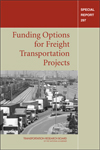
























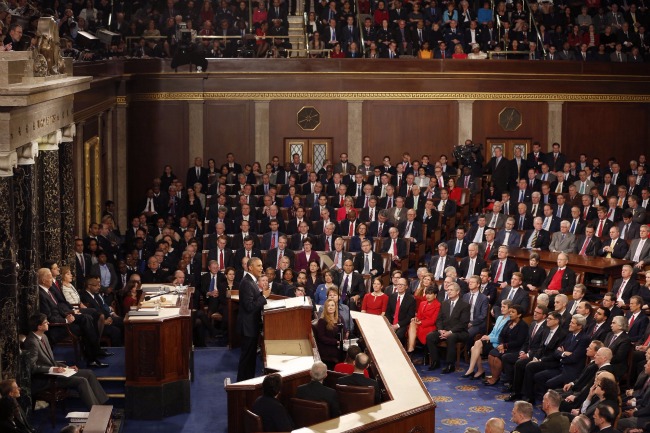 This year’s State of the Union address focused on topics including energy, education, climate change, and cancer care. The National Academies Press provides resources directly related to these issues. Below, we’ve annotated the complete text of the President’s State of the Union speech with relevant reports from the National Academies that provide authoritative, independent guidance on these issues.
This year’s State of the Union address focused on topics including energy, education, climate change, and cancer care. The National Academies Press provides resources directly related to these issues. Below, we’ve annotated the complete text of the President’s State of the Union speech with relevant reports from the National Academies that provide authoritative, independent guidance on these issues.